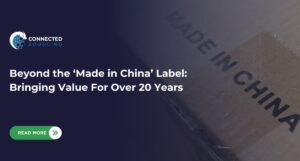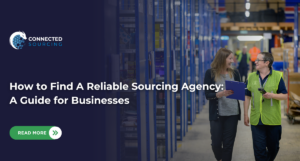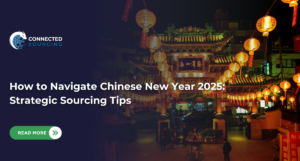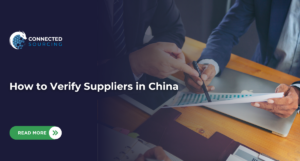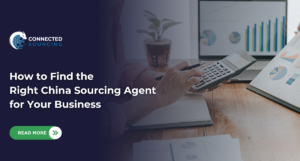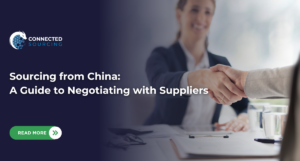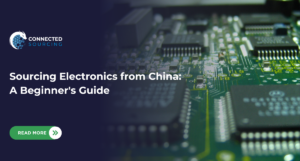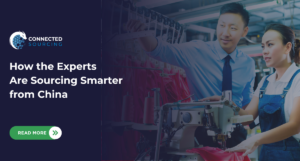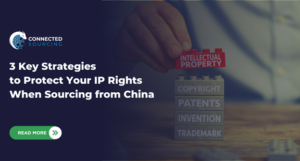
China is renowned as a global hub for electronics manufacturing, offering a wide array of products at competitive prices. For businesses and individuals looking to source electronics from China, understanding the process is important to ensure quality, compliance, and cost-effectiveness.
This blog will walk you through the essential stages of sourcing electronics from China and what you need to know about regulatory compliance.
Steps in Sourcing Electronics from China
1. Understanding the Market and Identify Your Needs
Before you start sourcing electronics, you first have to understand the Chinese electronics market. This includes researching the available product types (e.g smartphones, laptops, components), the quality levels of different manufacturers, and the current market trends.
You must also clearly define the type of electronics you need. Specify the product type, features, quality standards, and target price range. Create a detailed product specification document that outlines all your requirements. This serves as a reference throughout the process and avoids misunderstandings with suppliers.
2. Finding a Reliable Supplier
Once you have a better understanding of the market, you can start looking for a reliable supplier. Use platforms like Alibaba, Global Sources, and Made-in-China to find potential suppliers. Additionally, consider visiting trade shows like the Canton Fair, Hong Kong Electronics Fair, and CES Asia to meet suppliers in person and see their products firsthand.
However, getting a reliable supplier doesn’t stop there. You must also do your due diligence in verifying your supplier. Check for business licenses, certifications (e.g., ISO 9001 for quality management), and track records.
Getting a global sourcing company can help you streamline this process. They will be your strategic partner in sourcing electronics, providing you with a list of trustworthy suppliers from their wide network and conducting supplier verification and audits on your behalf.
3. Negotiating a Price and Contract
After you find the supplier you want to work with, negotiate a price and finalize a contract. Discuss pricing, minimum order quantities (MOQ), payment terms, lead times, and shipping options. Building a good rapport with your supplier can lead to better terms and a long-term partnership.
If you want to make this process easier, a sourcing company can also handle supplier relationships and management for you. They can also help you bridge language barriers with a Chinese supplier.
4. Compliance with Regulations
Another important consideration when sourcing and importing electronics is complying with all relevant safety regulations in your country. Research specific regulations that apply to your products and work with your supplier to ensure compliance.
This will be discussed in more detail in the latter part of this blog.
5. Importing and Customs Clearance
Once production of your electronic products has been completed, you will need to arrange for them to be shipped to your country. This will involve working with a freight forwarder to handle the logistics of shipping and customs clearance.
Understanding Regulatory Aspects of Sourcing Electronics
Compliance with International Standards
When sourcing electronics from China, it’s very important to ensure that the products comply with international standards and certifications. Here are some common regulations and certifications you should be aware of:
- CE Marking: Required for electronics sold within the European Economic Area (EEA), indicating compliance with health, safety, and environmental protection standards.
- FCC Certification: Mandatory for electronic devices sold in the United States, ensuring they do not cause harmful interference and comply with safety standards.
- RoHS Directive: Restricts the use of specific hazardous materials found in electrical and electronic products sold within the EU.
- REACH Regulation: Addresses the production and use of chemical substances and their potential impacts on human health and the environment.
- UL Certification: Ensures that products meet safety standards in the United States and Canada.
Intellectual Property Protection
Protecting your intellectual property (IP) is another crucial component when sourcing electronics from China. Take steps to protect your designs, trademarks, and patents:
- Register Your IP: Register your trademarks and patents in China to prevent counterfeiting and IP theft.
- Use Non-Disclosure Agreements (NDAs): Have suppliers sign NDAs to protect your confidential information and proprietary designs.
Import Regulations
Ensure compliance and avoid legal issues by understanding the import regulations in your country:
- Tariffs and Duties: Be aware of the tariffs and duties applicable to electronics imported from China. These costs can significantly impact your overall budget.
- Product Labeling: Ensure that your products meet the labeling requirements of your target market, including safety warnings, compliance marks, and country of origin labels.
- Customs Documentation: Prepare all necessary customs documents (commercial invoice, packing list, bill of lading, certificates of origin) to facilitate smooth customs clearance.
Environmental and Safety Regulations
Ensure that the electronics you source comply with environmental and safety regulations in your target market:
- WEEE Directive: Governs the recycling and disposal of electrical and electronic equipment in the EU.
- Energy Efficiency Standards: Some countries have specific energy efficiency requirements for electronic products, such as ENERGY STAR in the United States.
Conclusion
Sourcing electronics from China can be a rewarding experience, offering a wider selection of products and potentially lower costs. However, remember that it requires careful planning, research, and adherence to regulations. By understanding the steps involved, the importance of quality control, and the regulatory landscape, you can mitigate risks and ensure a smooth sourcing process.
To make the process easier, consider partnering with a reputable global sourcing company like Connected Sourcing. Our team of experts and extensive experience in sourcing from China can streamline the entire process for you, from finding a reliable supplier to ensuring quality control and regulatory compliance.
Ready to leverage the potential of sourcing from China? Contact Connected Sourcing today for a free consultation!

Frequently Asked Questions
Do I Need to Speak Mandarin?
Not necessarily! But understanding these tips and potentially partnering with a Mandarin-speaking sourcing agent can make things a lot easier.
What if My Supplier Doesn't Speak English Fluently?
Many global sourcing companies offer translation and interpreter services. Consider working with a sourcing agent who can manage communication for you.
Is WeChat the Only Way to Communicate?
While WeChat is popular, email is still widely used. The best method depends on your supplier's preference. Discuss communication methods during the planning stage to find a solution that works for both of you.
Why Use a Sourcing Company?
Sourcing companies can bridge the language gap, translate documents, handle negotiations, and ensure clear communication throughout the process. This frees you up to focus on other parts of your business, knowing communication is running smoothly.
By following these communication best practices, you can bridge the gap and build strong, successful partnerships with Chinese manufacturers. Remember, clear communication is the foundation of any global sourcing journey.
Connected Sourcing can help you navigate your sourcing process by providing an end-to-end solution, including communication with your suppliers. Contact us today to learn more!

